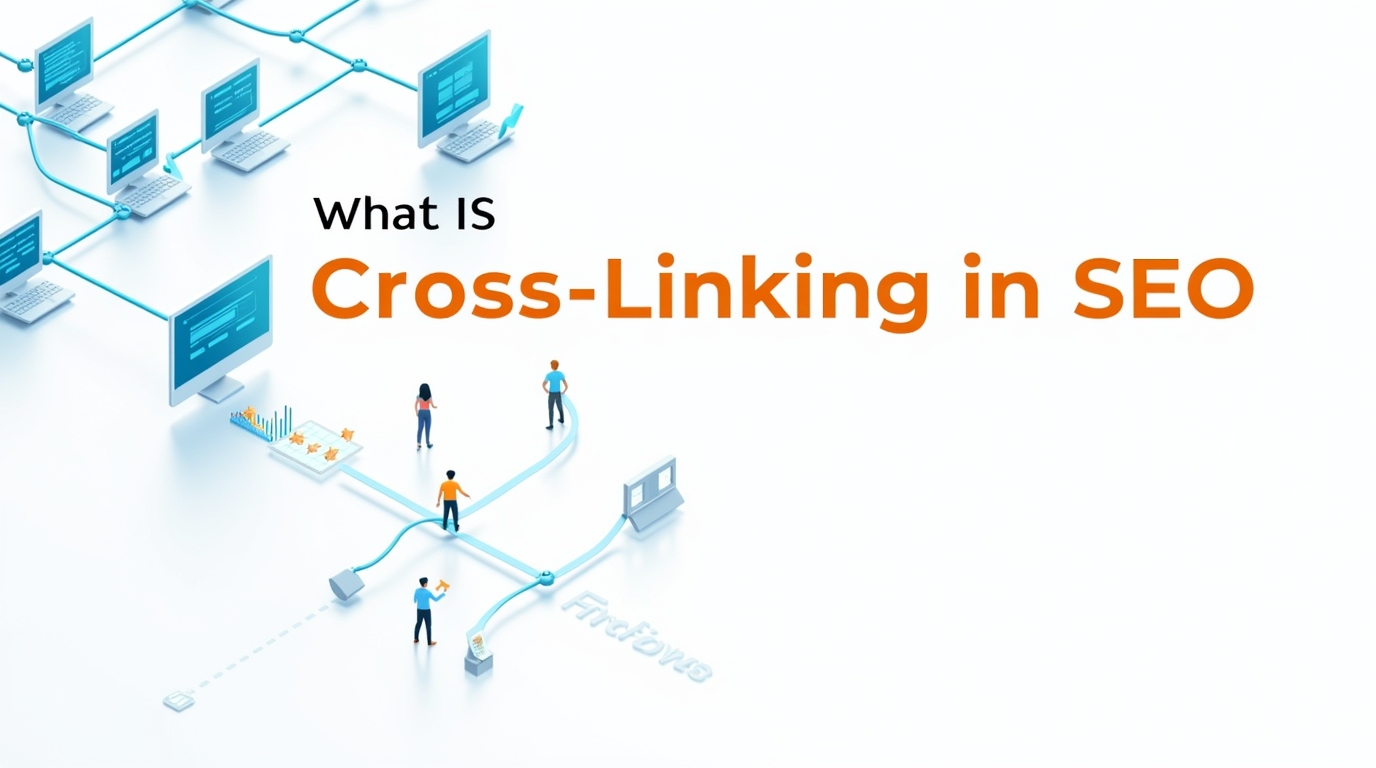
Cross linking in SEO is a powerful way to improve your website’s ranking on Google. It involves linking pages within your site or between websites you control. This guide explains what cross linking is, why it matters, and how to use it effectively. Written by Malik from HQLINKERS, this article provides clear, actionable advice for beginners and pros alike.
What Is Cross Linking in SEO?
Cross linking refers to creating hyperlinks between pages on the same website or across multiple websites you own. These links help users navigate your site and guide search engine crawlers, like Google’s bots, to understand your content better. Cross linking can be internal (within one site) or external (between your own sites).
For example, a blog post about SEO tips might link to your service page about guest posting services. This is an internal cross link. If you own another website and link it to HQLINKERS, that’s an external cross link.
Why Cross Linking Matters
Cross linking is important because it:
- Improves website navigation for users.
- Helps search engines understand your site’s structure.
- Spreads authority (or “link juice”) across pages.
- Keeps users on your site longer, reducing bounce rates.
- Boosts rankings for targeted keywords.
Internal Link Suggestion: Link to a blog post on “How to Improve Website Navigation” for more tips on user experience.
How Cross Linking Helps SEO

Cross linking supports SEO in several ways. Here’s how it works:
1. Enhances Site Structure
Links create a clear hierarchy. They show search engines which pages are most important. For example, linking from your homepage to key service pages signals their value.
2. Improves Crawling and Indexing
Google’s crawlers follow links to discover new pages. Cross links ensure all your pages are found and indexed quickly.
3. Boosts Page Authority
Links pass authority from one page to another. A high-traffic blog post linking to a product page can improve that page’s ranking.
4. Increases Time on Site
Relevant links keep users clicking through your site. This signals to Google that your content is valuable, which can improve rankings.
5. Supports Keyword Rankings
Using descriptive anchor text (the clickable text in a link) helps Google understand what the linked page is about. For example, linking “SEO guest posting” to your service page reinforces that keyword.
External Link Suggestion: Link to Google’s Search Central guide on crawlable links (https://developers.google.com/search/docs/crawling-indexing/links-crawlable) for credibility.
Suggested Image: A flowchart showing authority flowing from a homepage to service pages via cross links.
Types of Cross Linking
There are two main types of cross linking:
- Internal Cross Linking: Links between pages on the same website. Example: A blog post linking to your contact page.
- External Cross Linking: Links between different websites you own. Example: Your SEO blog linking to your web design site.
Both types help SEO, but internal links are easier to control and implement.
How to Use Cross Linking Effectively

Follow these best practices to make cross linking work for your website:
1. Use Descriptive Anchor Text
Anchor text should describe the linked page clearly. Instead of “click here,” use phrases like “learn about guest posting” or “SEO services.”
2. Link to Relevant Pages
Only link to pages that add value for the user. For example, a blog about SEO tools could link to a page listing your SEO services.
3. Avoid Overlinking
Too many links can confuse users and look spammy to Google. Aim for 2-5 links per 500 words, depending on content length.
4. Diversify Anchor Text
Don’t use the same anchor text repeatedly. Mix it up with variations like “SEO tips,” “search engine strategies,” or “website ranking advice.”
5. Check for Broken Links
Broken links hurt SEO and user experience. Use tools like SEMrush or Ahrefs to find and fix them regularly.
6. Plan Your Site Structure
Create a logical hierarchy with pillar pages (broad topics) linking to cluster pages (specific topics). This organizes content and strengthens cross linking.
Suggested Image: A mind map showing a website’s pillar and cluster pages connected by links.
Internal Link Suggestion: Link to a guide on “Creating an SEO-Friendly Site Structure” for more details.
Common Questions About Cross Linking
Here are answers to questions people often ask about cross linking, based on Google’s “People Also Ask” section:
What’s the Difference Between Cross Linking and Backlinking?
Cross linking connects pages within your site or between your own sites. Backlinking involves links from external websites to yours. Both help SEO, but backlinks are harder to get.
Is Cross Linking Safe for SEO?
Yes, when done naturally. Avoid excessive linking or using exact-match anchor text repeatedly, as this can trigger Google penalties.
How Many Cross Links Should I Use?
There’s no fixed number, but focus on quality over quantity. Links should feel natural and help users. A good rule is 2-5 links per 500 words.
Can Cross Linking Hurt My SEO?
Poorly done cross linking, like spammy or irrelevant links, can harm SEO. Always prioritize user experience and relevance.
NLP Terms and Themes in Cross Linking
Natural Language Processing (NLP) helps Google understand content and user intent. Here are key NLP-related terms and themes tied to cross linking:
- Context: Links provide context about the linked page’s topic, helping Google match it to user queries.
- Relevance: Relevant links signal to Google that your content aligns with user intent.
- Anchor Text: Descriptive anchor text improves Google’s understanding of page content.
- User Intent: Links should match what users want (e.g., information, services, or products).
- Entity Relationships: Links show how pages relate, like connecting “SEO” to “guest posting.”
By using cross linking thoughtfully, you align with Google’s NLP focus on relevance and user satisfaction.
Related Searches to Deepen Your Understanding
Google’s “Related Searches” suggest topics users care about. Here’s how they apply to cross linking:
- Internal Linking Best Practices: Focus on logical site structure and user-friendly navigation.
- SEO Website Architecture: Plan your site hierarchy to make cross linking more effective.
- Link Building Strategies: Combine cross linking with backlinking for maximum SEO impact.
- Anchor Text Optimization: Use varied, descriptive anchor text to avoid penalties.
Internal Link Suggestion: Link to a blog post on “SEO Website Architecture Tips” for more insights.
Why Choose HQLINKERS for SEO?
At HQLINKERS, we specialize in SEO services like guest posting, link building, and site optimization. Our team, led by Malik, uses proven strategies to boost your rankings. Want to improve your cross linking or overall SEO? Contact us today for expert help.
Final Thoughts
Cross linking is a simple yet powerful SEO strategy. It improves navigation, boosts page authority, and helps Google understand your site. By using relevant links, descriptive anchor text, and a clear site structure, you can rank higher and keep users happy. Start implementing cross linking today, and watch your website grow!
Need help with cross linking or other SEO services? Visit HQLINKERS for professional support.



